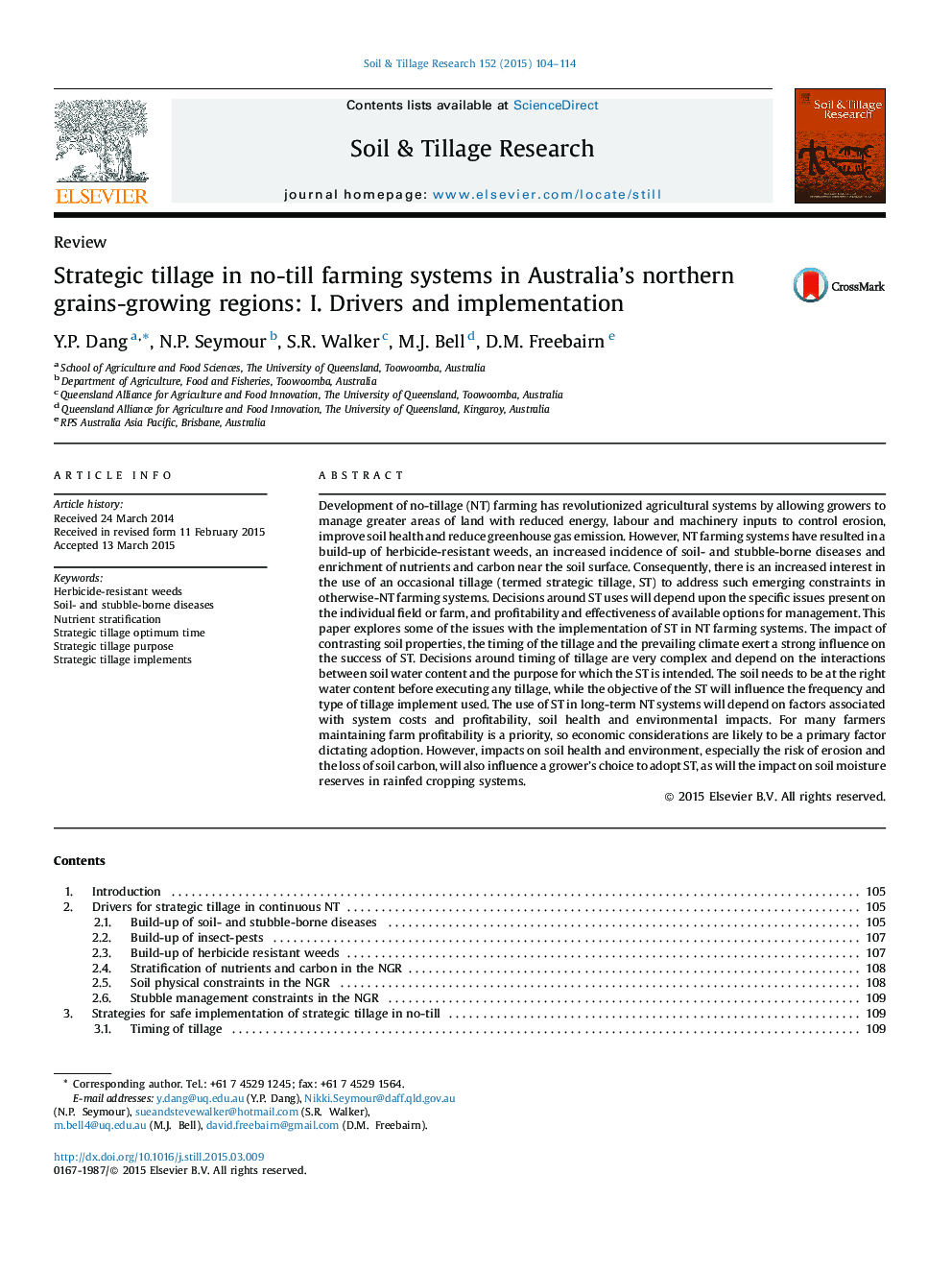| کد مقاله | کد نشریه | سال انتشار | مقاله انگلیسی | نسخه تمام متن |
|---|---|---|---|---|
| 305546 | 513033 | 2015 | 11 صفحه PDF | دانلود رایگان |

• We explored issues with the implementation of strategic tillage (ST)in no-till farming systems.
• Decisions around timing of ST are very complex.
• Uptake of ST will depend on system costs and profitability, soil health and environmental impacts.
• For many growers maintaining farm profitability is a priority.
• Impacts on soil health and environment will also influence a grower’s choice to adopt ST.
Development of no-tillage (NT) farming has revolutionized agricultural systems by allowing growers to manage greater areas of land with reduced energy, labour and machinery inputs to control erosion, improve soil health and reduce greenhouse gas emission. However, NT farming systems have resulted in a build-up of herbicide-resistant weeds, an increased incidence of soil- and stubble-borne diseases and enrichment of nutrients and carbon near the soil surface. Consequently, there is an increased interest in the use of an occasional tillage (termed strategic tillage, ST) to address such emerging constraints in otherwise-NT farming systems. Decisions around ST uses will depend upon the specific issues present on the individual field or farm, and profitability and effectiveness of available options for management. This paper explores some of the issues with the implementation of ST in NT farming systems. The impact of contrasting soil properties, the timing of the tillage and the prevailing climate exert a strong influence on the success of ST. Decisions around timing of tillage are very complex and depend on the interactions between soil water content and the purpose for which the ST is intended. The soil needs to be at the right water content before executing any tillage, while the objective of the ST will influence the frequency and type of tillage implement used. The use of ST in long-term NT systems will depend on factors associated with system costs and profitability, soil health and environmental impacts. For many farmers maintaining farm profitability is a priority, so economic considerations are likely to be a primary factor dictating adoption. However, impacts on soil health and environment, especially the risk of erosion and the loss of soil carbon, will also influence a grower’s choice to adopt ST, as will the impact on soil moisture reserves in rainfed cropping systems.
Journal: Soil and Tillage Research - Volume 152, September 2015, Pages 104–114